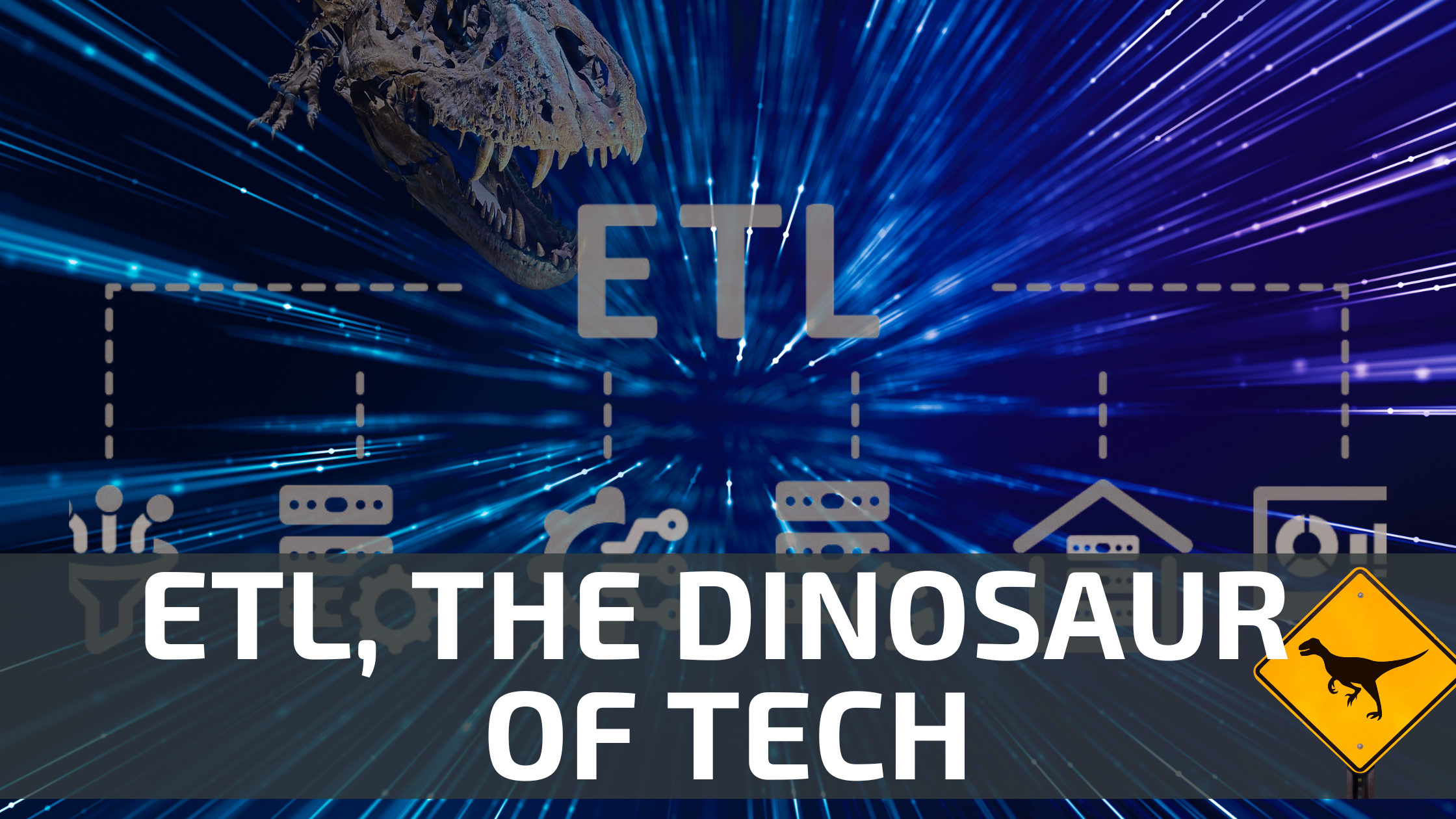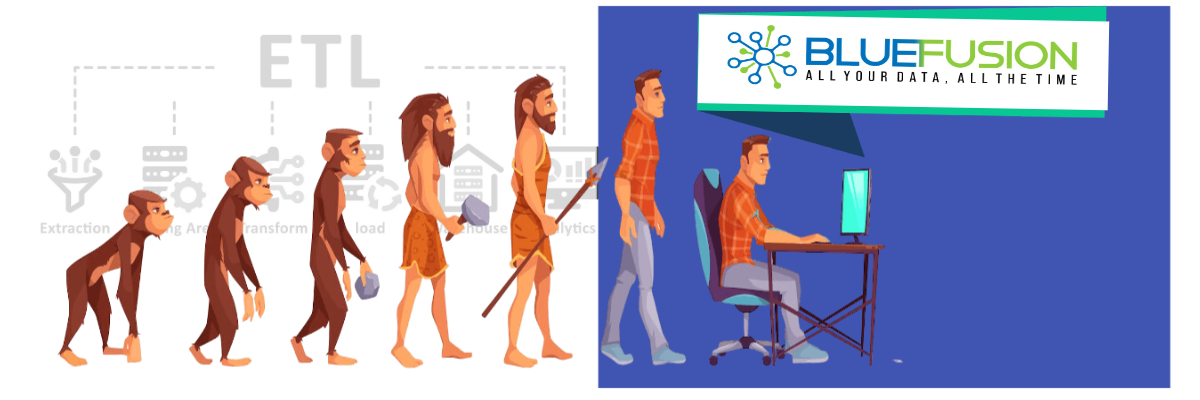
ETL, the Dinosaur of Tech
Big, beastly. Also, old and dead. ETL has been long used as the solution to one of the biggest challenges analysts face still today, the time consumption that data shopping brings.

The acronym ETL stands for Extract, Transform, and Load. Data is replicated (extract) from the originating data source, cleaned and normalized (transform), and then loaded into a large data lake. The consolidation of various data sources allows the analyst to query one source while seeing nonobvious relationships across previously siloed data. However, this still presents a few problems that weren’t able to be addressed, until now.
The Biggest Problem with ETL: the data is old. The relevance of data is pertinent to an investigation. The latency of this information can negatively impact the progress of a case. Thus, even though analysts are able to quickly see answers to their questions across multiple sources of data that have been combined into one (data lake), they must still do their due diligence to validate the information in the originating source. Wait, so we’re still data shopping?! Yep, but with another combined source added to the list. I know many of my peers bypass the data lake and go straight to the sources for this very reason, and by doing so they are back to data shopping.
The Second Biggest Problem with ETL: the cost to maintain the data lake is typically expensive and never-ending. Unfortunately, the data does not move itself, therefore, a designated person must perform the service. Sometimes this is an employee of the vendor. Other times, the organization has the personnel with the skill set to do the job. Either way, it’s either time, money, or both that could be better spent.
So if ETL is a thing of the past, what is the future?

I’m so glad you asked. Years ago, we acknowledged the challenges of ETL and embarked on a mission to create something extraordinary: the future of data analysis that addresses these difficulties head-on. Envision a groundbreaking solution that provides constant availability and real-time access to your data sources, empowering users with profound insights through Federated Queries. Federated search makes it faster and easier for you to find what you're looking for. It gives you the ability to search from one single location and query all connected data sources, simultaneously, revolutionizing how you find actionable intelligence. By employing Federated search, or as we refer to it, data access on demand powered by Blue Fusion, we help your team make operational decisions faster.
Our patented, Blue Fusion technology is both data and platform agnostic, you can plug Blue Fusion into any data source and feed your preferred intelligence platform. We guarantee Blue Fusion will not only speed up your analyst’s workflow by at least 80% but our easy-to-use drag-and-drop interface empowers field agents to make graphical queries on their own. This brings the most collaborative environment to your intelligence gathering. Did we mention you can set queries to run automatically and receive alerts when new results are available? With Blue Fusion it's never been easier to move from data to decisions.
I’d love to show you all of this and more, give me 20 minutes and I’ll give you back hours. Let's discuss how Blue Fusion can enhance your operations and save you time and money.

